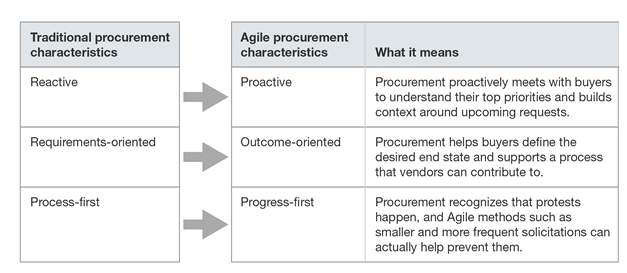Agile Procurement In Government Is Not An Oxymoron
In any conversation focused on Agile, it takes some time to figure out what each party means when they use the term. In my early research on Agile procurement in government (and Agile procurement in general), almost all of those conversations quickly devolved into what groups were doing Agile software development. But digital government is much broader than app dev and requires a cultural adoption of the spirit of Agile across all functions in order to succeed.
While evolving decades-long approaches to procurement involves process and technology changes, at its core it’s about adopting a new mindset about how the government can best serve the public’s best interests and trust in the digital era.

To some, Agile procurement in government sounds like an oxymoron. Traditional government approaches can seem to disincentive speed, overprioritize process and price, and default to “no” as the standard response to anything new. However, Forrester has had the pleasure of working with many change agents working at every level of government who have already adopted Agile principles to drive change. They’ve debunked myths about why Agile doesn’t work for government, such as:
- Agile does not have enough rigor. Those who have adopted Agile procurement in government understand that Agile requires more work, not less. It requires building and maintaining bridges between IT and the business that may have never existed before.
- There’s too much red tape to get around. Certainly, in government, red tape is a challenge. However, government procurement teams have found that the perception of limitations is more limiting than the limitations that actually exist.
- Agile opens the door to more risk. Agile procurement takes discipline, but it supports the needs of digital government to be able to quickly assess new solutions or vendors while the need or technology is still relevant. Teams that move too slowly can leave government agencies with solutions that are outdated before they are even implemented or misaligned to a deeper understanding of what will best serve the public.
For more lessons learned from Agile government procurement pros and lessons to get started, Forrester clients can read the full report on Agile procurement in government here.
